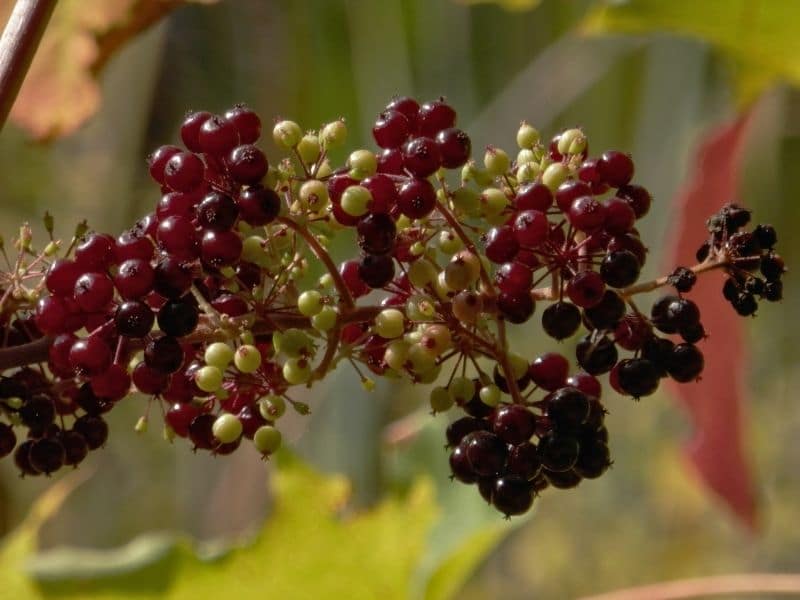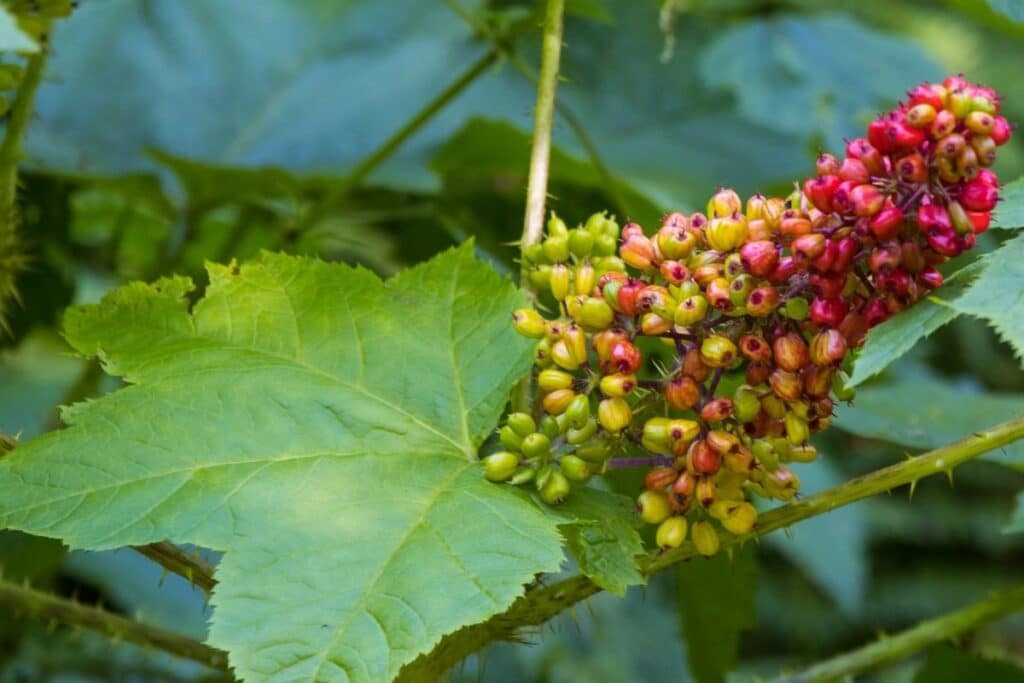American Spikenard is one of the interesting native plants that is great for naturalized woodland and wildlife gardens. These plants do well in full sun to partial shade in zones 3 to 8.
Read on to learn more about growing and caring for these underused plants.
What Is A Spikenard Shrub?
The American Spikenard is a flowering plant from the Araliaceae (Ginseng) family. These plants have quite a few common names, including Petty Morell, Indian root, old man’s root, pigeon weed, spignet, and life-of-man.

This is a multi-stemmed herbaceous perennial herb or sub-shrub that tends to die right back in the winter. The small American spikenard grows 3 to 5 feet (0.9 to 1.5 m) tall, but may occasionally reach 10 feet (3 m) tall in ideal conditions.
In the wild, these plants can be found growing in moist woodland and thicket habitats, often along river banks. Their natural distribution is in North America, from eastern Canada and the United States.
A characteristic feature of these plants is their dark, purple to almost black stems. The foliage consists of very large compound leaves that are alternately arranged.
Each leaf can reach over 2 feet (0.6 m) in length and has 9 to 21 oval leaflets up to about 6 inches (15 cm) long. The foliage is deep green in color.
Similar Species
The Japanese spikenard (Aralia cordata), or udo as it is often known, is a popular non-native alternative to the American spikenard. These plants are closely related and grow to a similar size.
Japanese spikenard is native to eastern Asia, where they are grown as a food source. The young shoots are eaten much like asparagus and the young leaves are enjoyed as a vegetable.
The most popular cultivar of the Japanese spikenard is a lovely plant known as ‘Sun King.’ These plants have brilliant yellow foliage that adds great color to semi-shade areas in the garden.
Spikenard Flowers
The five-petaled flowers of American spikenard are mostly white but with a yellow or green tint. The flowers are quite showy and occur in umbels from the leaf axils on the stem of the plant.
After flowering, these plants produce abundant clusters of fruits that are purple when ripe, each measuring about a quarter of an inch (6 mm) across.
How To Grow A Spikenard Plant
American Spikenard seeds tend to have a low germination rate, but these plants can nevertheless be grown from pre-treated seeds. If you wish to collect your own seed, scarification and stratification are recommended for successful germination. An alternative means of growing this plant is by root division of the rhizome.
Grow your spikenard in well draining soil but reasonably moist soil. This plant will do best in a good woodland type soil with plenty of organic material mixed into it, although they are quite tolerant of a variety of soil types.
Although these plants are known to be fairly drought tolerant, they do prefer moist environments and will do better if provided with regular water, especially if grown in dry climates. Site your plants in full sun to partial shade. These plants will probably do best in spaces that receive dappled light.
American spikenard is a soft-stemmed, herbaceous plant that should be grown in protected sites that are sheltered from strong wind. They are tolerant of a wide range of temperatures and can be grown anywhere from USDA hardiness zone 3 to 8.
Care and Maintenance
Since this is a fairly small plant that is best allowed to naturalize in the garden, very little pruning is necessary. These plants will die back in the winter, so you may wish to remove dead stems at this time.
Being a plant that grows from a rhizome, your spikenard may slowly spread in time and can be controlled by carefully cutting the rhizome.
Provided you are growing this plant in rich soil with a good amount of organic material, no additional feeding will be required. In poorer sandy soils, digging in some organic compost and mulch will create a more favorable substrate.
American spikenard is quite a pest and disease-resistant plant, although some plants are affected by leaf spots and pests like mealybugs, aphids, and other diseases.
Uses
Horticultural Uses
American spikenard is a wonderful plant for woodland gardens where it can be left to naturalize. This plant will also work if grown under sparse trees and large shrubs.
Gardeners who appreciate native species, particularly those with medicinal properties, will also enjoy growing these plants.
Human Uses
Although the fruits are not usually eaten by humans, they have been used in tinctures and to make jellies.
Externally the plant has been used to treat various infections and skin irritations like burns and ulcers. Internally this plant has been used for the treatment of various lung conditions, cough sore throats, and even backaches. Thick roots have also been used to add flavor to tea and make root beer.
Wildlife Uses
Fruit-eating wild birds love American spikenard berries and distribute the seeds widely in nature.
FAQs
Where should I plant Spikenard?
Spikenard prefers partial to full shade and well-draining, moist soil. It is often found in woodland settings. Choose a location with indirect light and consistently moist conditions.
Can you eat Spikenard berries?
No, the berries of Spikenard (Aralia racemosa) are not typically consumed, and the plant is not widely recognized for culinary use. While some plants have edible berries, Spikenard is traditionally valued for its medicinal properties, and caution is advised regarding its edibility. If considering using any plant for culinary or medicinal purposes, it’s crucial to consult with a knowledgeable expert to ensure safety and proper usage.
How big do Aralia racemosa get?
Spikenard (Aralia racemosa) can reach a height of 3 to 8 feet (approximately 1 to 2.5 meters) and has a spreading habit. The size can vary based on growing conditions and the specific cultivar.
Conclusion
American spikenard is an interesting native plant that not many gardeners make use of in the landscape. If you’re looking for a low-maintenance, native plant for a naturalized woodland garden, the Spikenards make a great choice.
References
References List:
(1) Zasada, J. C. & Blum, B. M. The Woody Plant Seed Manual. USDA
Close
aralia racemosa







